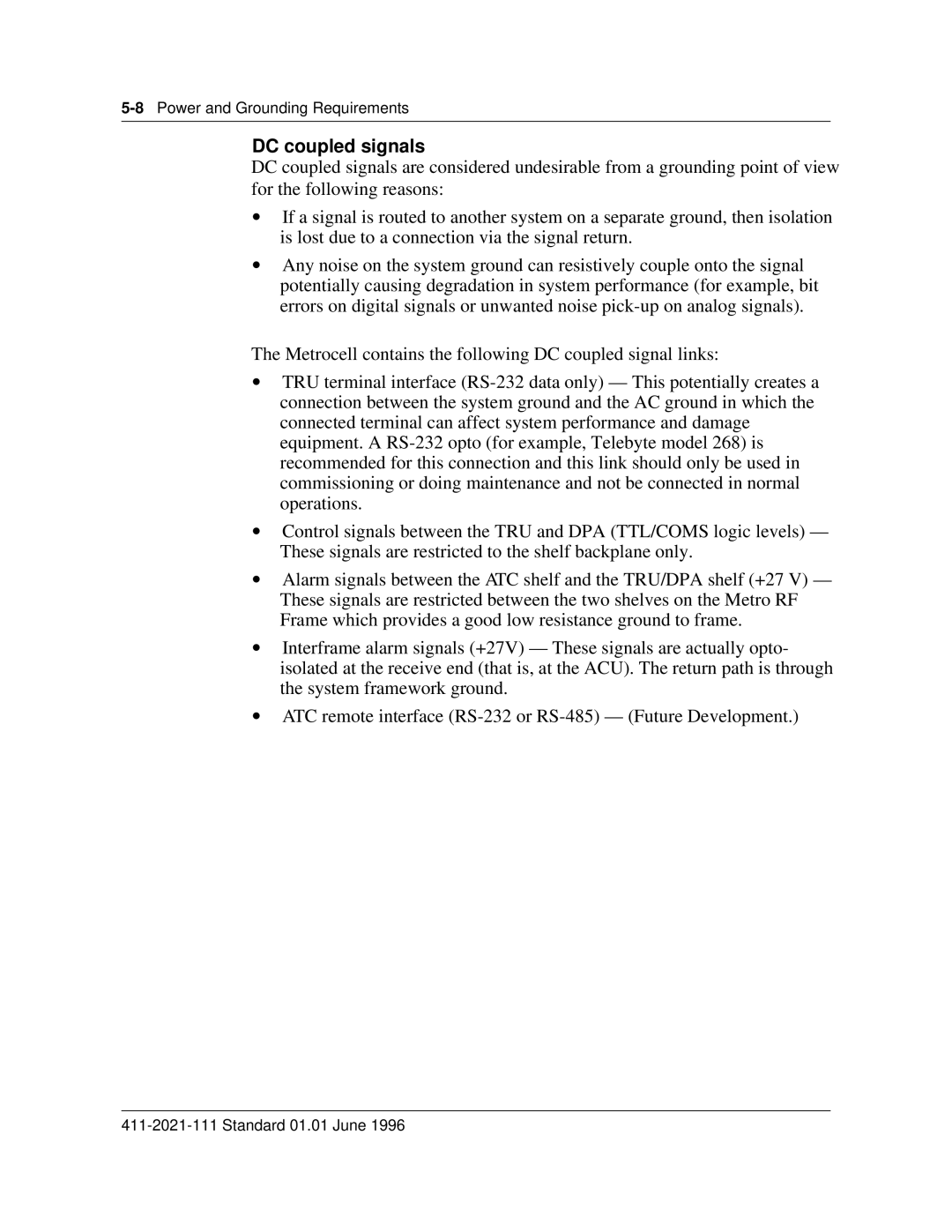
DC coupled signals
DC coupled signals are considered undesirable from a grounding point of view for the following reasons:
•If a signal is routed to another system on a separate ground, then isolation is lost due to a connection via the signal return.
•Any noise on the system ground can resistively couple onto the signal potentially causing degradation in system performance (for example, bit errors on digital signals or unwanted noise
The Metrocell contains the following DC coupled signal links:
•TRU terminal interface
•Control signals between the TRU and DPA (TTL/COMS logic levels) — These signals are restricted to the shelf backplane only.
•Alarm signals between the ATC shelf and the TRU/DPA shelf (+27 V) — These signals are restricted between the two shelves on the Metro RF Frame which provides a good low resistance ground to frame.
•Interframe alarm signals (+27V) — These signals are actually opto- isolated at the receive end (that is, at the ACU). The return path is through the system framework ground.
•ATC remote interface
